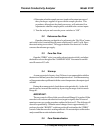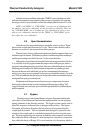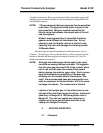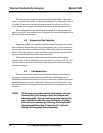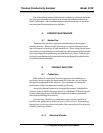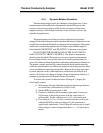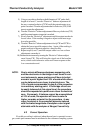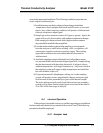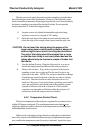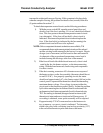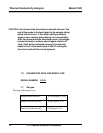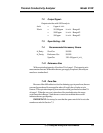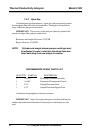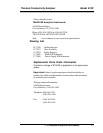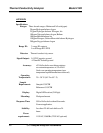
Teledyne Analytical Instruments
21
Thermal Conductivity Analyzer Model 212R
or incorrect instrument installation. The following conditions can produce an
erratic output from the analyzer:
1) Installation in an area that is subject to large changes in ambient
temperature, direct sunlight, drafts from wind, blowers, or air condi-
tioners. Any of the foregoing conditions will produce a bidirectional
(diurnal) variation in output signal.
2) Sample gas with a moisture content of 10 ppm or greater. Again, the
output will vary bi-directionality with ambient temperature changes.
If the sample gas is known to have a fairly high moisture content a
dryer should be installed in the sample line.
3) Even the smallest leak anywhere in the sampling system upstream
from the analyzer, a small leak at a fitting, valve, or regulator, will
cause almost constant variation in analyzer output. The resulting
signal drift would be erratic and could be either bi-directional or
unidirectional.
4) Acid in the sampling system (soldering fluxes) will produce continu-
ous, uncontrollable, unidirectional output signal drift. Sample tubing
that has been treated with descaling chemicals, if subject to above
ambient temperatures, will outgas continuously. Any form of acid in
the sampling system will outgas at high temperatures and attack the
hot wire elements of the cell.
5) Composition materials (diaphragms, tubing, etc.) in the sampling
system will produce erratic, unpredictable changes in output signal
level because of their permeability to gases other than the sample.
The nylon tubing normally used in quick disconnect type sampling
systems will produce diurnal output signal excursions in the order of
10 to 20% of the fine range of analysis.
6.4 Incorrect Operation.
If the analyzer is not stable on zero gas, and the supporting gas installation
has been made and checked in accordance with sections 2 and 3, the following
procedures should be employed.
6.4.1 Analyzer Leak



